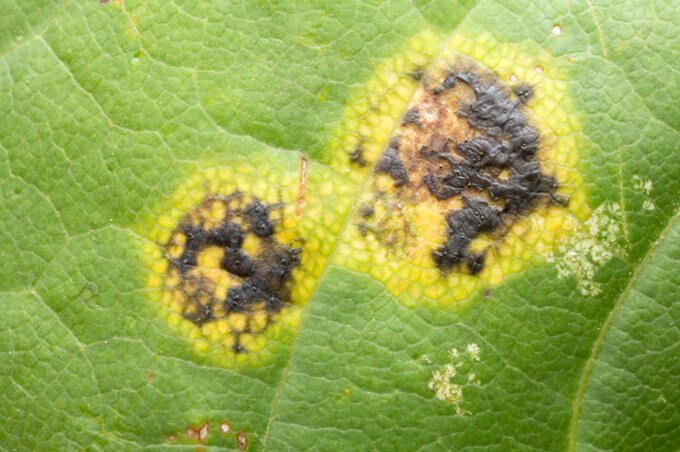Assistant Professor Shota Masumoto and his colleagues of the Institute of Life and Environmental Sciences at the University of Tsukuba, have discovered a fungal pathogen that produces characteristic black fruiting bodies (reproductive organs formed by fungi) on the leaves of Salix arctica, the dominant species on Ellesmere Island, Canada. The spore size and shape of the fruiting bodies, which are important features for taxonomic purposes, differed from those of any previously discovered closely related species, and the DNA sequence also differed from that of existing closely related species. As a result, it was described as a new fungal species in the genus Rhytisma. The results were published in the journal Forest Pathology.

Ellesmere Island, the tip of which is located at 83 degrees north latitude, is one of the northernmost islands in the world along with Greenland and Norway's Spitsbergen Island. Although the island's land is covered by snow and ice during the winter months, and the summer season is short (∼2 months), the snow melts on the unglaciated coastal areas and a variety of vegetation cover the ground surface. More than 100 species of short plants (∼10 cm tall) inhabit the area and form the tundra. These plants support the tundra ecosystem by serving as a food source for a variety of other organisms, but they can also become infected and sick. However, not much research has been conducted on plant pathogens in the Arctic region, and there is only one study that reported plant pathogens on Ellesmere Island.
The National Institute of Polar Research (NIPR) is leading a survey of plants and fungi on Ellesmere Island under the Arctic Challenge for Sustainability project of the Ministry of Education, Culture, Sports, Science and Technology. In collaboration with Associate Professor Masaki Uchida of NIPR, the research group conducted a phylogenetic analysis of specimens collected from Oobloyah Bay, northern Ellesmere Island in 2022. They used microscopy to examine the morphology of the specimens and sequencing techniques to decode their ribosomal RNA sequences.
The results showed that this fungus has characteristics that distinguish it from any other fungus discovered to date. Therefore, it was described as a new species of the genus Rhytisma. Rhytisma species have been shown to cause disease and inhibit photosynthesis on willows and poplars in cold climates. The classification of this species to the genus Rhytisma was based on its black fruiting bodies, its sporangium and spore morphologies.
Phylogenetic analysis of its DNA also placed the species in the same clade as other fungi of the genus Rhytisma that grow on host willow trees. (A clade is any taxonomic group of organisms derived from a common ancestor that do not share an ancestor with other groups.) These closely related species were similar to those reported from Spitsbergen Island, which is also in the Arctic region, but they differed in taxonomically distinguishing morphologies such as spore size and fruiting body shape.
Fungi of the genus Rhytisma expanded their distribution as their host willow species expanded and speciated, and it is speculated that differences in fungal morphology arose in the process (theory of evolution). Arctic willows are described as being circumpolar, meaning the same or similar species are distributed in different regions such as North America, Europe and Russia. Fungi of the genus Rhytisma that parasitize willow trees have a relatively wide host range, and it is known that the same species can grow on different species of willows. Therefore, the research group expected these species to be widely distributed in the Arctic region. However, this study showed that differences on the regional and host species levels can lead to differences in pathogens, even within the same Arctic region.
The new species is speculated to have expanded its range after the end of the Last Glacial Period and the disappearance of the ice sheet that covered the Arctic approximately 10,000 years ago. As data on closely related species from the Arctic and other regions are collected in the future, the mysteries of how fungi of the genus Rhytisma spread with their host plants into the Arctic region and how they survive on land in the northernmost regions are expected to be answered.
Journal Information
Publication: Forest Pathology
Title: The northernmost plant pathogenic fungus, Rhytisma arcticum sp. nov.: Morphological and molecular characterization of a novel species from Ellesmere Island, Canada
DOI: 10.1111/efp.12818
This article has been translated by JST with permission from The Science News Ltd. (https://sci-news.co.jp/). Unauthorized reproduction of the article and photographs is prohibited.




